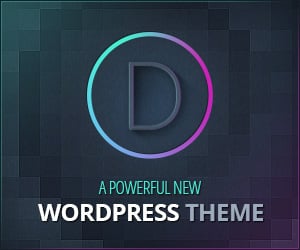The Internet is changing… fast. With technological advancements – notably HTML5 and CSS3 – designers are able to create innovative layouts easier than ever before.
Of course, trends emerge – and fade away – as designers inspire (and are inspired by) other designers? interpretations with these new technologies.
So where are we now? And, more importantly, where are we headed? This post hopes to answer these questions.

Minimalism and Negative Space
This has been a growing trend for several years, and shows no sign of slowing down. Minimalism allows designers to create websites which target a single idea (or desired action) with pinpoint precision.
And as you can probably guess, negative space is a major component of minimalism. Empty space in design is not only visually appealing , it forces the readers eyes to a pre-determined focal point (be it the USP, or call to action). Plus, negative space helps portray relevance among elements in relation to their distance from each other.
Typography
Typography has been used since before the printing press. But until recently, designers were forced to use web-safe fonts to ensure readability among various browsers. Now, with the creation of applications such as TypeIt, designers can uttilize a wide variety of exciting new fonts without browser compatibility issues.
Textured Backgrounds
Another growing trend – especially in 2011 – is the use of textured backgrounds. Used correctly, textured backgrounds add depth and dimension to site design… especially if the texture ties into the overall theme (e.g. a flooring company could use these wood backgrounds with great success).
Be warned, however: used improperly, textured backgrounds distract readers and end up doing more harm than good.
Infographics
Infographics? That is soooo 2009…?
And if you think that… think again. The need for compelling infographics only continue to grow. It still remains an effective method for conveying large amounts of information in exciting, linkable ways.
Pixel Crisp Design
Now more than ever, pixel-perfect designs really standout. Designers must focus on creating elements which appear as beautiful on mobile devices as a 60 inch widescreen.
Inside tip: use the Anti-alias property – in conjunction with Snap to Pixels options – to create pixel-perfect images.
Extensive Use of Pastels
Over the past several years, designers have leaned towards darker websites with bright, contrasting fonts. However, this trend seems to be shifting towards lighter palettes and spaces. This push is probably due to the overall trend towards simplicity and negative space.
And with lighter palettes, readers are able to assimilate information faster than with darker designs. While this may appear to be an over-generalization (and it is to a certain degree), take a look at Creattica?s gallery and see for yourself that pastels are in right now.
Progressive Loading
Instead of relying on multiple pages (and risk losing readers) smart designers are utilizing progressive loading to create one long page. At first, only the top portion is loaded, but as readers scroll down, each element is loaded, thereby providing a seamless browsing experience.
Adam Costa is an eCommerce consultant who provides advice on organizational leadership training and conversion optimization.












Nice read.
We can also add use of JQuery replacing the Flash to create elements like slideshows and accordions.